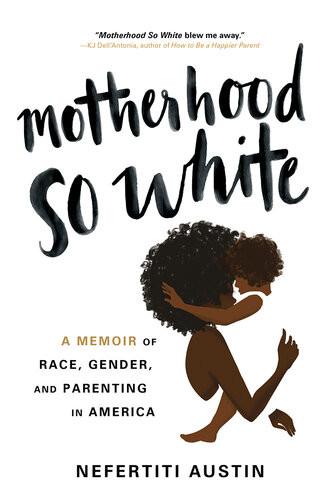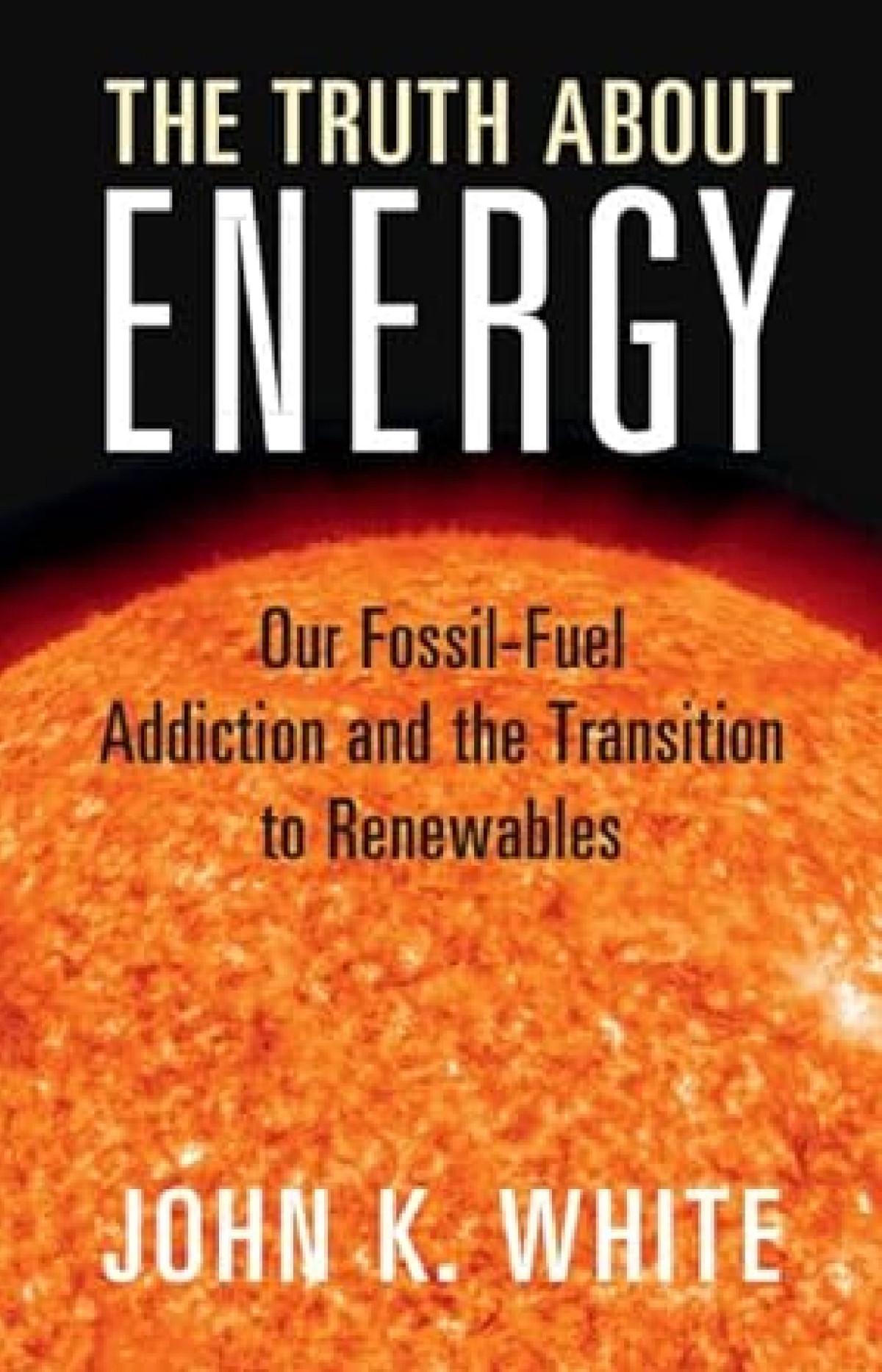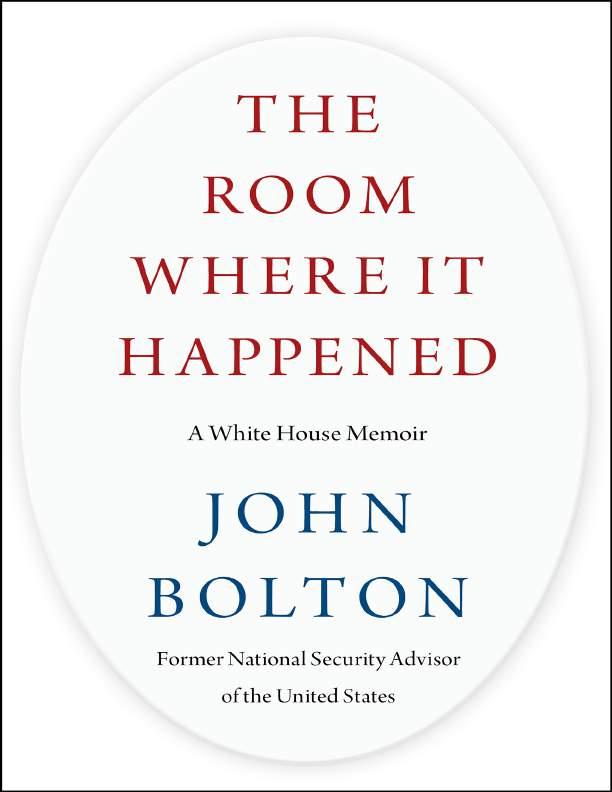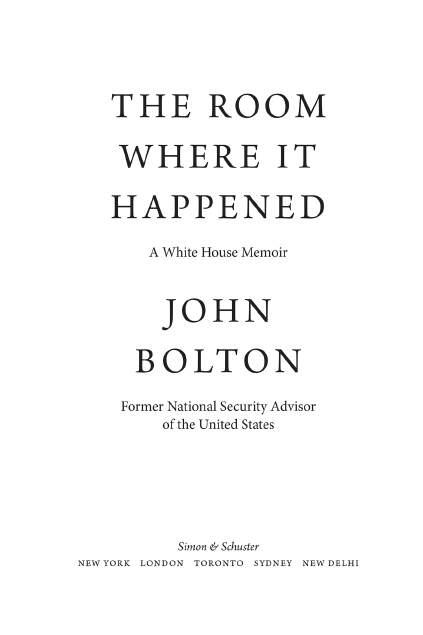THELONGMARCHTOAWEST WINGCORNEROFFICE
One attraction of being National Security Advisor is the sheer multiplicity and volume of challenges that confront you. If you don’t like turmoil, uncertainty, and risk—all while being constantly overwhelmed withinformation,decisions tobemade,andthesheer amount of work,and enlivened by international and domestic personality and ego conflicts beyond description—try something else. It is exhilarating, but it is nearly impossible to explain to outsiders how the pieces fit together, which they oftendon’t inanycoherent way.
I cannot offer a comprehensive theory of the Trump Administration’s transformation because none is possible. Washington’s conventional wisdom on Trump’s trajectory, however, is wrong. This received truth, attractive to the intellectually lazy, is that Trump was always bizarre, but inhis first fifteenmonths,uncertaininhis newplace,andheldincheckby an “axis of adults,” he hesitated to act. As time passed, however, Trump became more certain of himself, the axis of adults departed, things fell apart,andTrumpwassurroundedonlyby“yesmen.”
Pieces of this hypothesis are true, but the overall picture is simplistic. The axis of adults in many respects caused enduring problems not because theysuccessfullymanagedTrump,as the High-Minded(an apt description I picked up from the French for those who see themselves as our moral betters) have it, but because they did precisely the opposite. They didn’t do nearly enough to establish order, and what they did do was so transparently self-serving and so publicly dismissive of many of Trump’s very clear goals (whether worthy or unworthy) that they fed Trump’s already-suspicious mind-set, making it harder for those who came later to
have legitimate policy exchanges with the President. I had long felt that the role of the National Security Advisor was to ensure that a President understood what options were open to him for any given decision he needed to make, and then to ensure that this decision was carried out by the pertinent bureaucracies. The National Security Council process was certain to be different for different Presidents, but these were the critical objectivestheprocessshouldachieve.
Because, however, the axis of adults had served Trump so poorly, he second-guessed people’s motives, saw conspiracies behind rocks, and remained stunningly uninformed on howto run the White House, let alone the huge federal government. The axis of adults is not entirely responsible for this mind-set. Trump is Trump. I came to understand that he believed he could run the Executive Branch and establish national-security policies on instinct, relying on personal relationships with foreign leaders, and with made-for-television showmanship always top of mind. Now, instinct, personal relations, and showmanship are elements of any President’s repertoire. But they are not all of it, by a long stretch. Analysis, planning, intellectual discipline and rigor, evaluation of results, course corrections, and the like are the blocking and tackling of presidential decision-making, theunglamoroussideof thejob.Appearancetakesyouonlysofar.
Ininstitutional terms,therefore, it is undeniable that Trump’s transition and opening year-plus were botched irretrievably. Processes that should have immediately become second nature, especially for the many Trump advisors with no prior service even in junior Executive Branch positions, never happened. Trump and most of his team never read the government’s “operators’ manual,” perhaps not realizing doing so wouldn’t automatically make them members of the “deep state.” I entered the existing chaos, seeing problems that could have been resolved in the Administration’s first hundred days, if not before. Constant personnel turnover obviously didn’t help, nor did the White House’s Hobbesian bellum omnium contra omnes (“war of all against all”). It may be a bit much to say that Hobbes’s description of human existence as “solitary, poor, nasty, brutish and short” accurately described life in the White House, but by the end of their tenures, many key advisors would have leaned toward it. As I explained in my book Surrender Is Not an Option, 1 my approach to accomplishing things in government has always been to absorb as much as possible about the bureaucracies where I served (State,
Justice, the United States Agency for International Development) so I couldmorereadilyaccomplishmyobjectives.
My goal was not to get a membership card but to get a driver’s license. That thinking was not common at the Trump White House. In early visits to the West Wing, the differences between this presidency and previous ones I had served were stunning. What happened on one day on a particular issue often had little resemblance to what happened the next day, or the day after. Few seemed to realize it, care about it, or have any interest in fixing it. And it wasn’t going to get much better, which depressingbut inescapable conclusionI reachedonlyafter I hadjoinedthe Administration.
Former Nevada Senator Paul Laxalt, a mentor of mine, liked to say, “In politics, there are no immaculate conceptions.” This insight powerfully explains appointments to very senior Executive Branch positions. Despite the frequency of press lines like “I was very surprised when President Smith called me…,” such expressions of innocence are invariably only casually related to the truth. And at no point is the competition for highlevel jobs more intense than during the “presidential transition,” a US invention that has become increasingly elaborate in recent decades. Transition teams provide good case studies for graduate business schools onhownot todobusiness.Theyexist for a fixed,fleetingperiod(from the election to the inauguration) and then disappear forever. They are overwhelmed by hurricanes of incoming information (and disinformation); complex, often competing, strategy and policy analyses; many consequential personnel decisions for the real government; and mediaandinterest-groupscrutinyandpressure.
Undeniably, some transitions are better than others. How they unfold reveals much about the Administration to come. Richard Nixon’s 1968–69 transition was the first example of contemporary transitions, with careful analyses of each major Executive Branch agency; Ronald Reagan’s in 1980–81 was a landmark in hewing to the maxim “Personnel is policy,” intently focused on picking people who would adhere to Reagan’s platform; andDonaldTrump’s2016–17transitionwas…DonaldTrump’s. I spent election night, November 8–9, in Fox News’s Manhattan studios, waiting to comment on air about “the next President’s” foreign-
policy priorities, which everyone expected would occur in the ten p.m. hour, just after Hillary Clinton was declared the winner. I finally went on the air around three o’clock the next morning. So much for advance planning, not only at Fox, but also in the camp of the President-Elect. Few observers believed Trump would win, and, as with Robert Dole’s failed 1996 campaign against Bill Clinton, Trump’s pre-election preparations weremodest,reflectingtheimpendingdoom.IncomparisonwithHillary’s operation,whichresembledalargearmyonacertainmarchtowardpower, Trump’s seemedstaffedbyafewhardysouls withtimeontheir hands.His unexpected victory, therefore, caught his campaign unready, resulting in immediate turf fights with the transition volunteers and the scrapping of almost all its pre-election product. Starting over on November 9 was hardly auspicious, especially with the bulk of the transition staff in Washington, and Trump and his closest aides at Trump Tower in Manhattan. Trump didn’t understand much of what the huge federal behemoth did before he won, and he didn’t acquire much, if any, greater awareness during the transition, which did not bode well for his performanceinoffice.
I played an insignificant part in Trump’s campaign except for one meeting with the candidate on Friday morning, September 23, at Trump Tower, three days before his first debate with Clinton. Hillary and Bill were a year ahead of me at Yale Law School, so, in addition to discussing national security, I offered Trump my thoughts on how Hillary would perform: well prepared and scripted, following her game plan no matter what. She hadn’t changed in over forty years. Trump did most of the talking, as in our first meeting in 2014, before his candidacy. As we concluded, he said, “You know, your views and mine are actually very close.Veryclose.”
At that point, I was widely engaged: Senior Fellow at the American Enterprise Institute; Fox News contributor; a regular on the speaking circuit; of counsel at a major law firm; member of corporate boards; senior advisor to a global private-equity firm; and author of opinion articles at the rate of about one a week. In late 2013, I formed a PACand a SuperPACtoaidHouseandSenatecandidates whobelievedinastrongUS national-security policy, distributing hundreds of thousands of dollars directly to candidates and spending millions in independent expenditures in the 2014 and 2016 campaigns, and preparing to do so again in 2018. I
had plenty to do. But I had also served in the last three Republican Administrations,2 and international relations had fascinated me since my daysat YaleCollege.I wasreadytogoinagain.
New threats and opportunities were coming at us rapidly, and eight years of BarackObamameant therewas muchtorepair.I hadthought long andhardabout America’s national securityina tempestuous world: Russia and China at the strategic level; Iran, North Korea, and other rogue nuclear-weapons aspirants; the swirling threats of radical Islamicist terrorism in the tumultuous Middle East (Syria, Lebanon, Iraq, and Yemen), Afghanistan and beyond; and the threats in our own hemisphere, like Cuba, Venezuela, and Nicaragua. While foreign-policy labels are unhelpful except to the intellectually lazy, if pressed, I liked to say my policy was “pro-American.” I followed Adam Smith on economics, Edmund Burke on society, The Federalist Papers on government, and a merger of Dean Acheson and John Foster Dulles on national security. My first political campaigningwasin1964onbehalf of BarryGoldwater.
I knew senior Trump campaign officials like Steve Bannon, Dave Bossie, and Kellyanne Conway from prior associations, and had spoken to them about joining a Trump Administration should one happen. Once the transition began, I thought it reasonable to offer my services as Secretary of State, as did others. When Chris Wallace came off the Fox set early on November 9,after theracewas called,heshookmyhandandsaid,smiling broadly, “Congratulations, Mr. Secretary.” Of course, there was no dearth of contenderstoleadtheStateDepartment,whichgeneratedendlessmedia speculation about who the “front-runner” was, starting with Newt Gingrich, proceeding to Rudy Giuliani, then Mitt Romney, and then back to Rudy. I had worked with and respected each of them, and each was credible in his own way. I paid special attention because there was constant chatter (not to mention pressure) that I should settle for being Deputy Secretary, obviously not my preference. What came next demonstrated Trumpian decision-making and provided (or should have) a cautionarylesson.
While all the early “leading contenders” were broadly conservative philosophically, they brought different backgrounds, different perspectives, different styles, different pluses and minuses to the table. Among these possibilities (and others like Tennessee Senator Bob Corker andformer UtahGovernor JonHuntsman),were there common,consistent
attributes and accomplishments Trump sought? Obviously not, and observersshouldhaveasked: What isthereal principlegoverningTrump’s personnel-selection process? Why not have Giuliani as Attorney General, a job he was made for? Romney as White House Chief of Staff, bringing his undeniable strategic planning and management skills? And Gingrich, withdecadesof creativetheorizing,asWhiteHousedomesticpolicyczar? Was Trump looking only for people from “central casting”? Much was made of his purported dislike of my moustache. For what it’s worth, he told me it was never a factor, noting that his father also had one. Other than shrinks and those deeply interested in Sigmund Freud, which I assuredly am not, I don’t really believe my looks played a role in Trump’s thinking. And if they did, God help the country. Attractive women, however, fall into a different category when it comes to Trump. Loyalty was the key factor, which Giuliani had proved beyond peradventure in the days after the Access Hollywood tape became public in early October. Lyndon Johnson once reportedly said of an aide, “I want real loyalty. I want him to kiss my ass in Macy’s window at high noon and tell me it smells like roses.” Who knew Trump read so much history? Giuliani was later extremely gracious to me, saying after he withdrew from the Secretaryof Statemelee,“Johnwouldprobablybemychoice.I thinkJohn isterrific.”3
The President-Elect called me on November 17, and I congratulated him on his victory. He recounted his recent calls with Vladimir Putin and Xi Jinping, and looked ahead to meeting that afternoon with Japanese Prime Minister Shinzo Abe. “We’ll have you up here in the next couple of days,” Trump promised, “and we are looking at you for a number of situations.” Some of the new President’s first personnel announcements came the next day, with Jeff Sessions picked as Attorney General (eliminating that option for Giuliani); Mike Flynn as National Security Advisor (appropriately rewarding Flynn’s relentless campaign service); and Mike Pompeo as CIA Director. (A few weeks after Flynn’s announcement, Henry Kissinger told me, “He’ll be gone within a year.” Although he couldn’t have known what was about to happen, Kissinger knew Flynn was in the wrong job.) As the days passed, more Cabinet and senior White House positions emerged publicly, including, on November 23, South Carolina Governor Nikki Haley as Ambassador to the UN, with Cabinet rank, a bizarre step to take with the Secretary of State still
unchosen. Haley had no qualifications for the job, but it was ideal for someone with presidential ambitions to check the “foreign policy” box on her campaign résumé. Cabinet rank or no, the UNAmbassador was part of State, and coherent US foreign policy can have only one Secretary of State. Yet here was Trump, picking subordinate positions in State’s universewithnoSecretaryinsight.Bydefinition,therewas troubleahead, especially when I heard from a Haley staff person that Trump had considered her to be Secretary. Haley, her staffer said, declined the offer because of lack of experience, which she obviously hoped to acquire as UNAmbassador.4
Jared Kushner, whom Paul Manafort had introduced me to during the campaign, called me over Thanksgiving. He assured me I was “still very muchinthemix”for Secretaryof State,and“inawholebunchof different contexts. Donald is a big fan of yours, as we all are.” Meanwhile, the New York Post reported on decision-making at Mar-a-Lago at Thanksgiving, quoting one source, “Donald was walking around asking everybody he could about who should be his secretary of state. There was a lot of criticism of Romney, and a lot of people like Rudy. There are also many people advocating for John Bolton.”5 I knew I should have worked the Mar-a-Lago primary harder! Certainly, I was grateful for the considerable support I had among pro-Israel Americans (Jews and evangelicals alike), Second Amendment supporters, Cuban-Americans, VenezuelanAmericans, Taiwanese-Americans, and conservatives generally. Many people called Trump and his advisors on my behalf, part of the venerable transitionlobbyingprocess.
The transition’s spreading disorder increasingly reflected not just organizational failures but Trump’s essential decision-making style. Charles Krauthammer, a sharp critic of his, told me he had been wrong earlier to characterize Trump’s behavior as that of an eleven-year-old boy. “I was off by ten years,” Krauthammer remarked. “He’s like a one-yearold. Everything is seen through the prism of whether it benefits Donald Trump.” That was certainly the way the personnel-selection process appeared from the outside. As one Republican strategist told me, the best waytobecomeSecretaryof Statewasto“trytobethelast manstanding.”
Vice President–Elect Pence called on November 29 to ask to meet in Washington the next day. I knew Pence from his service on the House Foreign Affairs Committee; he was a solid supporter of a strong national-
security policy. We conversed easily about a range of foreign and defense policy issues, but I was struck when he said about State: “I would not characterize this decision as imminent.” Given subsequent press reports that Giuliani withdrew his candidacy for Secretary at about that time, it could be the entire selection process for State was starting all over again, analmost certainlyunprecedenteddevelopment that far intothetransition.
When I arrived at the transition offices the next day, Representative Jeb Hensarling was leaving after seeing Pence. Hensarling, it was reported, was sosure of gettingTreasurythat he toldhis staff tobeginplanning.His not being named matched Representative Cathy McMorris Rodgers’s finding she was not to be Interior Secretary after being told she would, as well as former Senator Scott Brown’s learning he would not become Secretary of Veterans Affairs. The pattern was clear. Pence and I had a friendly half-hour talk, during which I recounted, as I had several times with Trump, Acheson’s famous remark when asked why he and President Truman had such an excellent working relationship: “I never forgot who wasPresident,andwhowasSecretaryof State.Andneither didhe.”
Trump announced Jim Mattis as Defense Secretary on December 1, but the uncertainty about State continued. I arrived at Trump Tower the next day for my interview and waited in the Trump Organization lobby with a State Attorney General and a US Senator also waiting. Typically, the President-Elect was behind schedule, and who should emerge from his office but former Defense SecretaryBobGates.I surmisedlater that Gates was there to lobby for Rex Tillerson as Secretary of Energy or State, but Gates gave nohint of his mission,just exchangingpleasantries as he left.I finallyenteredTrump’soffice,for ameetinglastingjust over anhour,also attended by Reince Priebus (soon to become White House Chief of Staff) and Bannon (who would be the Administration’s Chief Strategist). We talkedabout theworld’shot spots,broader strategicthreatslikeRussiaand China, terrorism, and nuclear-weapons proliferation. I started with my Dean Acheson story, and, in contrast with my previous Trump meetings, I did most of the talking, responding to questions from the others. I thought Trump listened carefully; he didn’t make or receive any phone calls, and we weren’t interrupted until Ivanka Trump came in to discuss family business,or perhapstrytoget Trumpvaguelybackonschedule.
I was describing why State needed a cultural revolution to be an effective instrument of policy when Trump asked, “Now, we’re discussing
Secretary of State here, but would you consider the Deputy job?” I said I would not, explaining that State could not be run successfully from that level. Moreover, I was uneasy about working for someone who knewI had competedfor his jobandwhomight wonder constantlyif heneededafood taster. As the meeting ended, Trump took my hand in both of his and said, “I am surewewill beworkingtogether.”
Afterward, in a small conference room, Priebus, Bannon, and I caucused. Both of them said the meeting had gone “extremely well,” and Bannon said Trump had “never heard anything like that before” in terms of the scope and detail of the discussion. Nonetheless, they pressed me to take Deputy Secretary, which told me they were not optimistic I would get the top job. I explained again why the Deputy idea was unworkable. The next day, I learned Trump would interview Tillerson for State, the first time I heard Tillerson’s name raised, which likely explained why Priebus and Bannon asked me about being nominated for Deputy. Neither Trump nor the others raised the issue of Senate confirmation. Most Trump nominees could expect significant or even unanimous Democratic opposition. Rand Paul’s well-known isolationist views meant he would be a problem for me, but several Republican Senators (including John McCain, Lindsey Graham, and Cory Gardner) told me his opposition would be overcome. Nonetheless, after this meeting, there was silence from TrumpTower,convincingmethat I wouldremainaprivatecitizen.
Tillerson’s December 13 nomination, however, only unleashed another wave of speculation (for and against) about my becoming Deputy. One Trump advisor encouraged me, saying, “In fifteen months, you’ll be Secretary. They know his limitations.” One of those limitations was Tillerson’s relationship from his years at ExxonMobil with Vladimir Putin andRussia,preciselyat a time Trumpwas comingunder earlybut steadily increasingcriticism for “colluding” withMoscowtodefeat Clinton.While Trump was ultimately vindicated on collusion, his defensive reaction willfully ignored or denied that Russia was meddling globally in US and many other elections, and public-policy debate more broadly. Other adversaries, like China, Iran, and North Korea, were also meddling. In comments at the time, I stressed the seriousness of foreign interference in our politics. McCain thanked me in early January, saying I was a “man of principle,” which likely wouldn’t have endeared me to Trump had he known.
At Defense, there was also turmoil over the Deputy Secretary job, as Mattis pushed for Obama-era official Michèle Flournoy. Flournoy, a Democrat, might have been Secretary of Defense herself had Clinton won, but why Mattis wanted her in a Republican Administration was hard to fathom.6 Subsequently, Mattis also pressed for Anne Patterson, a career Foreign Service officer, to fill the critical job of Under Secretary of Defense for Policy. I had worked several times with Patterson and knew her to be philosophically compatible for a senior policy position in a liberal Democratic Administration, but hardly in a Republican one. Senator Ted Cruz questioned Mattis about Patterson, but Mattis was unable or unwilling to explain his reasons, and the nomination, under increasing opposition from Republican Senators and others, ultimately collapsed.All this turmoil ledGraham andothers tocounsel that I stayout of the Administrationinits earlydays andwait tojoinlater,whichI found persuasive.
For a time, there was consideration of my becoming Director of National Intelligence, to which former Senator Dan Coats was ultimately named in early January. I thought that the office itself, created by Congress after the 9/11 attacks to better coordinate the intelligence community, was a mistake. It became simply a bureaucratic overlay. Eliminating or substantially paring back the Director’s Office was a project I would have enthusiastically undertaken, but I concluded quickly Trump himself was insufficiently interested in what would necessarily be a hard slog politically. Given the ensuing, prolonged, almost irrational war betweenTrumpandthe intelligence community,I was luckythe Director’s jobdidn’t comemyway.
And so the Trump transition ended with no visible prospect of my joining the Administration. I rationalized the outcome by concluding that if Trump’s post-inaugural decision-making process (using that word loosely) was as unconventional and erratic as his personnel selections, I wasfinestayingoutside.If onlyonecouldsaythat for thecountry.
Then, less than a month into the Administration, Mike Flynn selfdestructed. It started with Flynn’s facing criticism for alleged remarks to Russian Ambassador Sergei Kislyak, someone I knew well; he had been my Moscow counterpart for a time when I was Under Secretary of State
for Arms Control and International Security in the Bush 43 Administration. The criticism intensified dramatically when Flynn seemingly lied to Pence and others about the Kislyak conversation. Why Flynn would lie about an innocent conversation, I never understood. What senior Administration aides, and indeed Trump himself, told me a few days later made more sense, namely, that they had already lost confidence in Flynn for his inadequate performance (much as Kissinger had predicted), and the “Russian issue” was simply a politically convenient cover story. Flynn resigned late on February 13, after a day of White House Sturm und Drang, just hours after Kellyanne Conway unhappily received the unfair and unfortunate job of telling the ravenous press corps that Flynn had Trump’s full confidence. This is the very definition of confusionanddisorder.
Confusion and disorder unfortunately also marked the NSC staff in the Administration’s first three weeks. Personnel choices were in disarray, as CIA Director Mike Pompeo personally took the stunning, nearly unprecedented step of denying “sensitive compartmented information” clearance to one of Flynn’s choices to be a Senior Director, one of the toprung NSC jobs.7 Denying this critical clearance, as everyone knew, effectivelybarredthat person from workingat the NSC,a stinging blowto Flynn. He also faced innumerable battles with career officials detailed to the NSC during Obama’s tenure but, as is customary, still there as the Trump presidency began. These battles provided frequently leaked accounts of bureaucratic blood on the floor at the White House and the Eisenhower Executive Office Building, the great gray granite Victorian pileacrossWest ExecutiveAvenuehousingthebulkof theNSCstaff.
Similarly, on one of Trump’s signature campaign issues—stemming illegal immigration—theWhiteHousestumbledthroughonemistakeafter another in the early days, trying to craft Executive Orders and policy directives. Judicial challenges were inevitable, and likely to be hotly litigated in a judiciary filled with eight years of Obama appointees. But the White House entirely owned the initial immigration debacles, betraying a lack of transition preparation and internal coordination. A “dissent channel” cable at State, intended to be internal, found its way onto the Internet, signed by over a thousand employees, criticizing the immigration initiative. The press feasted on it, although the cable’s arguments were weak, disjointed, and poorly presented. But somehow the
cable, and similar arguments by media commentators and Hill opponents, went unanswered.Whowasincharge?What wastheplan?
Surprisingly, Tillerson called three days after the Senate Foreign Relations Committee approved his nomination on January 23 by an 11–10 party-line vote, pulling me from a corporate board meeting. We talked for thirty minutes, mostly about State organizational issues and how the interagency decision-making process worked. Tillerson was gracious and professional, and utterly uninterested in having me as his Deputy. Of course, had I been in his shoes, I would have felt the same way. Tillerson later told Elliott Abrams, whom he also considered, that he wanted someone who would work behind the scenes supporting him, not someone who had gained public attention, as I had at the UN and as a Fox commentator. Tillerson asked if I was interested in anything at State other than Deputy, and I said no, having already had the second-best job as UN Ambassador. Tillerson laughed, and we talked about the often-fraught relations between Secretaries and UN Ambassadors. It was clear he had not spokenwithHaleyabout their relationshipandthat hehadnoideahow tohandlethistickingtimebomb.
I worried that Tillerson was susceptible to capture by the State Department bureaucracy. He had spent his entire forty-one-year career at Exxon,inanenvironment where there were clear metrics for performance, profit-and-loss statements being harsh taskmasters, and where the corporate culture was hardly subject to revolutionary change from within. After years of perching at the top of Exxon’s hierarchy, believing that all his subordinates were on the same team, it would have been remarkable for Tillerson, sitting in the Secretary’s seventh-floor suite, to assume anything else about the careerists on the floors below him or posted around the world. Precisely because of his background, Tillerson should have surrounded himself with people familiar with the Foreign and Civil Services’ strengths and weaknesses, but he went a very different way. He neither sought a cultural revolution (as I would have done), nor embraced “the building” (as all who worked there referred to it), nor sought to control the bureaucracy without fundamentally changing it (as Jim Baker did). Instead, he isolated himself with a few trusted aides, and paid the inevitableprice.
But with Flynn, fairly or unfairly, crashing and burning, the National Security Advisor job, which I hadn’t previously considered because of
Flynn’s closeness to Trump, was now open. The press speculated that Flynn’s successor would be another general, mentioning David Petraeus, Robert Harwood (formerly Navy, now at Lockheed, pushed vigorously by Mattis), or Keith Kellogg (a longtime Trump supporter and now NSC Executive Secretary). Tillerson seemed to be uninvolved, another sign of trouble, both because he was not in the loop and because he didn’t seem to realize the potential problem for him if a Mattis ally got the job, potentially making Tillerson’s relations with the White House more difficult. Indeed, news stories were noting Tillerson’s low profile generally.8
Bannontextedme onFriday,February17,asking me to come to Mar-aLago to meet Trump over President’s Day weekend. That day, MSNBC’s Joe Scarborough tweeted, “I strongly opposed @AmbJohnBolton for SecState. But the former UN ambassador is Thomas Jefferson in Paris compared to Michael Flynn.” In Trumpworld, this could be helpful. During the Mar-a-Lago primary that weekend, a guest told me he had heardTrumpsayseveral times,“I’m startingtoreallylikeBolton.”Hadn’t I concluded before that I needed to work that crowd harder? Trump interviewed three candidates: Lieutenant General H. R. McMaster, author of Dereliction of Duty, a superb study of civil-military relations in America; Lieutenant General Robert Caslen, Commandant of West Point; and me. I had met and spoken with McMaster years before and admired his willingness to espouse controversial positions. Meeting Caslen for the first time, I saw him as a personable and highly competent official. Both were in full-dress uniform, immediately demonstrating their marketing skills.Me,I still hadmymoustache.
Trump greeted me warmly, saying how much he respected me and that he was happy to consider me to be National Security Advisor. Trump also asked if I would consider a “title like Bannon’s” (who was also present in the private bar on Mar-a-Lago’s first floor, along with Priebus and Kushner), covering strategic issues. Thus, apparently, I could be one of many generic “Assistants to the President,” of which there were already too many in Trump’s White House, with only slapdash efforts at defining their rolesandresponsibilities.Thiswasacompletenonstarter for me,soI politely declined, saying I was only interested in the National Security Advisor job. As Henry Kissinger once reportedly said, “Never take a government jobwithout aninbox.”
ThePresident assuredmethat Flynn’ssuccessor wouldhaveafreehand in organizational and personnel matters, which I believed essential in running an effective NSC staff and interagency process. We covered the full range of world issues, a tour d’horizon, as the State Department loves to call it, and Trump interjected at one point, “This is so great. John sounds just like he does on television. I could just keep listening. I love it.” Kushner asked, “How do you handle the point that you’re so controversial, that people either love you or hate you?” As I was opening my mouth to answer, Trump said, “Yeah, just like me! People either love me or hate me. John and I are exactly alike.” I added only that one should be judged on performance, listing a few of what I considered to be my foreign-policy achievements. The meeting ended with a discussion about Russia, as Trump said, “I saw you talking the other day about the INF issue,” referring to the Intermediate-Range Nuclear Forces Treaty with Russia. He then explained why it was so inequitable that no nations other than Russia and America (such as China, Iran, or North Korea) were limited in developing intermediate-range capabilities, and that the Russians were violating the treaty. This was almost exactly what I had said, so I had no doubt he was still watching and absorbing Fox News! I suggested we tell Putin to comply with Russia’s INF obligations or we wouldwithdraw,whichTrumpagreedwith.
Bannon and I left together, Bannon saying, “That was great.” Nonetheless, my clear impression was that Trump was going to pick a general. I returned to my hotel, and later in the day Bannon and Priebus asked me to breakfast with them at Mar-a-Lago the next morning. Priebus suggested alternatives to the National Security Advisor position, saying of Trump, “Remember who you’re dealing with.” They promised real influence, access to Trump, and the inevitability of Administration turnover, meaning I would eventually become Secretary of State or something. Based on my government experience, I explained that to run the bureaucracy, you needed to control the bureaucracy, not just watch it from the White House. The NSC was a mechanism to coordinate the national-security agencies, and the job required someone who had experience at lower levels on how it worked and didn’t work. I didn’t make an impression. I think Trump had said to them, in effect, “Get him into the Administration so he can defend us on television.” That was exactly the last thing I intended to do, regarding policies I had little or
nothing to do with formulating. At one point, Bannon said, “Help me out here, Ambassador,” which was actually what I was trying to do, although he meant that I should tell him what else would induce me to join the Administration.
Flying back to Washington, I sawon the airplane Wi-Fi that Trump had picked McMaster. That was no surprise, but I was surprised to hear Trump then say: “I knowJohn Bolton. We’re going to be asking him to work with us in a somewhat different capacity. John is a terrific guy. We had some really good meetings with him. He knows a lot. He had a good number of ideas, that I must tell you, I agree with very much. So, we’ll be talking to JohnBoltoninadifferent capacity.”
I clearly hadn’t made my point about the best role for me, certainly not to Kushner, who texted me shortly thereafter, “Great spending time together—we really want to get you on the team. Let’s talk this week to find the right spot as u have a lot to offer and we have a unique chance to get some good done.” Madeleine Westerhout, Trump’s secretary in “the Outer Oval” (the room where Trump’s personal assistants sat), called on Tuesday to connect me to Trump, but I had my cell phone on silent and didn’t catch it. Predictably, Trump was tied up when I later called back, so I asked Westerhout if she knew what the subject was, fearing a true fullcourt press. She said, “Oh, he just wanted to tell you how wonderful you are,” and said he wanted to thank me for coming to Mar-a-Lago. I told her that was verykind,but not wantingtoburdenhis schedule,I saidhe didn’t really need to call again, hoping to dodge the bullet. A few days later, Westerhout, always exuberant back then, left another message saying the President wanted to see me. I was convinced I would be pitched on some amorphous position, but fortunately I left the country for almost two weeksanddodgedthebullet again.
You can run, but you cannot hide, and a meeting with Trump was finally scheduled for March 23, after lunch with McMaster at the White House mess. I texted Bannon in advance to be transparent: I was only interested in the Secretary of State or the National Security jobs, and neither was open as far as I could tell. By coincidence, I entered the West Wing for the first time in over ten years as the press scrum waited outside to interview Republican House members meeting with Trump on the failing effort to repeal Obamacare. Just what I needed, even though I
didn’t plan to answer any questions. In the Twitter era, however, even a nonstoryisastory,asonereporter tweeted:
GLENN THRUSH JohnBoltonjustwalkedintotheWestWing—Iaskedhim whathewas doing,hesmiledandsaid‘healthcare!!!!’
I saw later that the Washington Post’s Bob Costa had tweeted while I was walkingin:
ROBERTCOSTA Trumpwants tobringJohnBoltonintotheadministration That’s why Boltonis attheWH today,per aTrumpconfidant Ongoingconvo
I had a perfectly pleasant lunch with McMaster, discussing Iraq, Iran, and North Korea, and we then went to the Oval to see Trump, who was just finishinglunchwithTreasurySecretaryStevenMnuchinandNelsonPeltz, aNewYorkfinancier.
Trump was sitting behind the Resolute desk, which was completely bare, unlike the desk in his New York office, which seemed always covered with newspapers, reports, and notes. He had a picture taken of the two of us, and then McMaster and I sat down in front of the desk for our discussion. We talked a bit about the Obamacare repeal effort and then turned to Iran and North Korea, repeating much of the ground McMaster and I had covered at lunch. Trump said, “You know, you and I agree on almost everything except Iraq,” and I replied, “Yes, but even there, we agree that Obama’s withdrawal of American forces in 2011 led us to the mess we have there now.” Trump then said, “Not now, but at the right time and for the right position, I’m going to ask you to come into this Administration,andyou’regoingtoagree,right?”I laughed,as didTrump and McMaster (although I felt somewhat uncomfortable on his behalf), and answered, “Sure,” figuring I had again dodged the bullet I had feared. No pressure, no rush, and no amorphous White House job without an inbox.
The meeting lasted about twenty-plus minutes, and then McMaster and I left,stoppingbyBannon’sofficeonthewayout.BannonandI visitedfor a while with Priebus, running into Sean Spicer in the hallway and then later the Vice President, who greeted me warmly. The atmosphere
reminded me of a college dorm, with people wandering in and out of each other’s rooms,chattingabout one thingor another.Weren’t these people in the middle of a crisis trying to repeal Obamacare, one of Trump’s signature 2016 issues? This was not a White House I recognized from past Administrations, that was for sure. The most ominous thing I heard was Mike Pence saying, “I’m really glad you’re coming in,” which was not what I thought I was doing! I finally left at about two fifteen, but I had the feelingI couldhavehungaroundall afternoon.
I could see this pattern of contact with the Trump White House lasting for an indefinite period, and to an extent it did. But I ended the Administration’s first hundred days secure in my own mind about what I was prepared to do and what I wasn’t. After all, as Cato the Younger says in one of George Washington’s favorite lines from his favorite play, “When vice prevails, and impious men bear sway, the post of honor is a privatestation.”
Life under Trump, however, did not resemble life in Joseph Addison’s eponymous Cato, where the hero strove to defend the failing Roman Republic against Julius Caesar. Instead, the newAdministration resembled much more closely the Eagles song “Hotel California”: “You can check out anytimeyoulike/ But youcannever leave.”
It was not long before Bannon and Priebus were again calling and texting me to come into the White House in some capacity, as they sought to overcome the mismatches between Trump, McMaster, and Tillerson. Themost palpablemanifestationof theproblemswasIran,specificallythe 2015 nuclear deal, which Obama considered a crowning achievement (the other being Obamacare). The deal was badly conceived, abominably negotiated and drafted, and entirely advantageous to Iran: unenforceable, unverifiable, and inadequate in duration and scope. Although purportedly resolvingthe threat posedbyIran’s nuclear-weapons program,the deal did no such thing. In fact, it exacerbated the threat by creating the semblance of a solution, diverting attention from the dangers, and lifting the economic sanctions that had imposed substantial pain on Iran’s economy, while allowing Tehran to proceed essentially unimpeded. Moreover, the deal did not seriously address other threats Iran posed: its ballistic-missile program (a thinly disguised effort to develop delivery vehicles for nuclear
weapons); its continuing role as the world’s central banker for international terrorism; andits other malignactivityinthe region,through the intervention and growing strength of the Quds Force, the Islamic Revolutionary Guard Corps’s external military arm, in Iraq, Syria, Lebanon, Yemen, and elsewhere. Freed from sanctions, benefiting from the transfer of $150 million in “cash on pallets” in cargo airplanes and the unfreezing of an estimated $150 billion in assets globally, Tehran’s radical ayatollahswerebackinbusiness.
Trump and other 2016 GOP candidates campaigned against the Joint Comprehensive Plan of Action, the lumbering formal title of the Iran deal, and it was widely believed to be ready for extreme unction following his inauguration. But a combination of Tillerson, Mattis, and McMaster frustrated Trump’s efforts to break free from this wretched deal, earning them the plaudits of the adoring media as an “axis of adults” restraining Trump from indulging in wild fantasies. If only they knew. In fact, many of Trump’ssupporterssawtheir effortsaspreventinghim from doingwhat he had promised voters he would do. And McMaster wasn’t doing himself any favors by opposing the phrase “radical Islamic terrorism” to describe things like… radical Islamic terrorism. Jim Baker used to tell me when I worked for him at Bush 41’s State Department and pressed for something Baker knewBushdidn’t want,“John,theguywhogot electeddoesn’t want todoit.”That was usuallyasignal I shouldstoppushing,but intheTrump Administration’s infant national-securityapparatus,what “theguywhogot elected”wantedwasonlyoneof manydatapoints.
In early May, after I had another White House discussion with Priebus and Bannon, they took me to what turned out to be a photo opportunity with Trump and Pence in the colonnade that connects the Residence to the West Wing. “John, so good to see you,” said Trump as we walked along the colonnade, surrounded by photographers. We talked about the Philippines and the Chinese threat to bring nearly the entire South China Sea under its sovereignty. When we finished, Trump said loud enough for the trailing mob of reporters to hear, “Is Rex Tillerson around? He should talk to John.” And with that, Trump was off to the Oval. Priebus said, “That wasgreat.Wewant toget youbackover hereregularly.”
Life at the White House developed its own rhythm, with Trump firing FBI Director James Comey later in May (at Kushner’s suggestion, according to Bannon), then meeting with Russian Foreign Minister Sergei
Lavrov (whom I had known for over twenty-five years at that point) and allegedlybeingless thancautious indiscussing classifiedmaterial, calling Comey a “nutjob,” according to the unbiased New York Times. 9 I was in Israel in late May to give a speech and met with Prime Minister Bibi Netanyahu, whom I had first met in the Bush 41 years. Iran’s threat was the centerpiece of our attention, as it should have been for any Israeli Prime Minister, but he was also dubious about assigning the task of bringinganendtothe Israel-Palestinianconflict toKushner,whose family Netanyahu had known for many years. He was enough of a politician not to oppose the idea publicly, but like much of the world, he wondered why Kushner thought hewouldsucceedwherethelikesof Kissinger hadfailed. I was back at the White House in June to see Trump, walking with Priebus to the Outer Oval. Trump saw us through his open door and said, “Hi,John,give me just a minute,I’m signingjudges’ commissions.” I was happytogive him all the time he needed,because Trump’s growingrecord on judicial nominations, in due course to be graced by the confirmation of Justices Neil Gorsuch and Brett Kavanaugh, was for conservatives the highest priority and greatest achievement of his tenure. When Priebus and I entered, I congratulated Trump on withdrawing from the Paris climate agreement, which the “axis of adults” had failed to stop him from doing and which I saw as an important victory against global governance. The Paris Agreement was a charade, for those truly concerned about climate change. As in many other cases, international agreements provided the semblance of addressing major issues, giving national politicians somethingtotakecredit for,but madenodiscerniblereal-worlddifference (in this case giving leeway to countries like China and India, which remained essentially unfettered). I gave Trump a copy of a 2000 article of mine called “Should We Take Global Governance Seriously?” from the Chicago Journal of International Law, not because I thought he would readit,but toremindhim of theimportanceof preservingUSsovereignty. I warned Trump against wasting political capital in an elusive search to solve the Arab-Israeli dispute and strongly supported moving the US embassy in Israel to Jerusalem, thereby recognizing it as Israel’s capital. On Iran, I urged that he press ahead to withdraw from the nuclear agreement and explained why the use of force against Iran’s nuclear program might be the only lasting solution. “You tell Bibi that if he uses force,I will backhim.I toldhim that,but youtell him again,”Trumpsaid,
unprompted by me. As the conversation ranged on, Trump asked, “Do you get along with Tillerson?” and I said we hadn’t spoken since January. Bannontoldme a fewdays later that Trumpwas pleasedwiththe meeting. Andindeed,afewweekson,Tillersoncalledtoaskmetobespecial envoy for Libyan reconciliations, which I saw as another exercise in boxchecking; if asked, Tillerson could tell Trump he had offered me something but I turned it down. Tillerson almost simultaneously asked Kurt Volker, a close associate of McCain’s, to become special envoy for Ukraine. Neither job required full-time government employment, but my viewwas youwereeither intheAdministrationor not,andhalfwayhouses wouldn’t work.
North Korea was also on the Administration’s mind, with the release of OttoWarmbier,whosufferedbarbaric treatment at Pyongyang’s hands and died upon returning to the United States. The North’s brutality told us everythingweneededtoknowabout itsregime.Moreover,Pyongyangwas launching ballistic missiles, including on the Fourth of July (how thoughtful), followed by another on July 28, which ultimately led to further UN Security Council sanctions on August 5. A few days later, Trump was prompted to threaten “fire and fury like the world has never seen” against North Korea,10 though Tillerson immediately said Americans should “sleep well at night” and have “no concern about this particular rhetoric of the past few days,” hardly clarifying things.11 I wondered if Tillerson was pooh-poohing North Korea or Trump, who upped the ante on August 11 by saying the USwas “locked and loaded” on North Korea.12 There was little visible evidence that any new military preparationswereunder way.
On August 30, Trump tweeted that we had talked to North Korea for twenty-five years without result, and there wasn’t much point in talking further.Trumpreiteratedthepoint onOctober 7:
Presidents andtheir administrations havebeentalkingtoNorthKoreafor 25 years,agreements madeandmassiveamounts ofmoney paid hasn’t worked,agreements violatedbeforetheink was dry,makings fools ofU S negotiators Sorry,butonly onethingwillwork!
Mattis, in South Korea, almost immediately contradicted Trump, saying there was always room for diplomacy, although he quickly walked
it back, claiming there was no daylight between him and the President.13 The dissonance was getting louder. North Korea had chimed in with its sixth nuclear-weapons test on September 3, this one almost certainly thermonuclear, followed twelve days later by firing a missile over Japan, underlining Trump’s point in his tweet. Almost immediately thereafter, Japanese Prime Minister Abe wrote a New York Times op-ed concluding that “more dialogue withNorthKorea wouldbe a deadend” andsaying,“I fully support the United States position that all options are on the table,” which is as close as any Japanese politician can get to saying he could support offensive military operations.14 By contrast, Tillerson was announcing we wanted “to bring North Korea to the table for constructive, productive dialogue.”15 He was obviously deep in the grip of “the building.” When Trump announced new financial sanctions on North Korea,Chinarespondedbysayingitscentral bankhaddirectedall Chinese banks to cease doing business with Pyongyang, which was quite a step forwardif actuallycarriedout (andmanyweredubious).16 Iran remained the most visible flashpoint, however, and in July Trump faced his second decision whether to certify Iran was complying with the nuclear deal. The first decision to do so had been a mistake, and now Trump was on the verge of repeating it. I wrote an op-ed for The Hill that appeared on its website on July 16,17 apparently setting off a daylong battle inside the White House. McMaster and Mnuchin held a conference call to brief reporters on the decision to certify Iranian compliance, and the White House e-mailed “talking points” to the media explaining the decision as their call was under way. But an outside analyst told me, “There’s chaos at the NSC,” the talking points were pulled back, and the decision to certify compliance was reversed.18 The New York Times, citing a White House official, reported on a nearly hour-long confrontation between Trump, on one side, and Mattis, Tillerson, and McMaster, on the other, on the certification issue, confirming what I had heard earlier. Other sources said the same thing.19 Trump ultimately succumbed, but not happily, and only after yet again asking for alternatives, of which his advisorssaidtherewerenone.Bannontextedme,“POTUSlovedit…Your op-eddrovehim onIran.”
Trump called me a few days later to complain about how the Iran certification issue had been handled, and especially about “people in the
State Department” who hadn’t given him any options. Then he said, referringtomylast conversationwithTillerson,“I hear what Rextalkedto you about won’t work. Don’t take some half-assed position over there. If he offers you something that’s really great, okay, whatever, but otherwise just wait. I’m going to call you,” concluding the call by saying I should “come and see [him] next week” on Iran. Bannon texted me right afterward, “We talk about it/u everyday.” I told Bannon I would write a plan about howthe US could withdrawfrom the Iran deal. It would not be hard.
The next day, Sean Spicer resigned as White House spokesman to protest Anthony Scaramucci’s being named Communications Director, with Sarah Sanders picked as Spicer’s successor. One week later, Trump fired Priebus, naming John Kelly, then Homeland Security Secretary and a former four-star Marine general, as White House Chief of Staff. On Monday, July 31, Kelly fired Scaramucci. In mid-August, controversy erupted over Trump’s comments about neo-Nazi demonstrators in Charlottesville, Virginia. He fired Bannon on August 18. Was this what businessschoolstaught about runninglargeorganizations?
What was not happening was any White House sign of life on my Irandeal exit strategy, which I had earlier transmitted to Bannon. When I sought a meeting with Trump, Westerhout suggested I first see Tillerson, which would have been a waste of time for both of us. I suspected that Kelly’s efforts to bring discipline to White House operations and limit Oval Office anarchy in particular had resulted in my “walk-in” privileges’ being suspended, along with those of many others. I thought it would be a shame to let my Iran plan wither, so I suggested to National Review editor Rich Lowry that he publish it, which he did at the end of August.20 Iran’s Foreign Minister, Javad Zarif, immediately denounced my plan as “a huge failure for Washington.”21 I knew I was on the right track. Most of the Washington media, instead of focusing on the plan’s substance, wrote instead on my loss of access to Trump, probably because they understood palace intrigue better than policy. Kushner texted me to say, “You are always welcome at the White House,” and “Steve [Bannon] and I disagreed on many things, but we were in sync on Iran.” In fact, Kushner invited me to meet on August 31 to go over his emerging Middle East peace plan, along with Iran. After a relatively long hiatus, I didn’t think thismeetingwasaccidental.
Nonetheless, still no word from Trump, although another Iran compliance certification, required every ninety days by statute, came due in October. The White House announced Trump would make a major Iran address on October 12, so I decided to stop being shy, phoning Westerhout to ask for a meeting. By then, Tillerson had reportedly called Trump “a fucking moron,” which he refused to deny flatly. Rumors flew that Kelly wanted to resign as Chief of Staff and that Pompeo would replace him, although it was also regularly rumored that Pompeo would replace McMaster. I was still focused on Iran and wrote another op-ed for The Hill, hoping the magic might work again.22 It appeared on October 9, the same day I had lunch with Kushner in his West Wing office. Although we talked about his Middle East plan and Iran, what really got his attention was the photo I brought of the gaudy entrance to Special Counsel Robert Mueller’soffice,locatedinthebuildingwheremySuperPACwaslocated.
The media reported Trump’s advisors were urging he decline to certify Iran as complying with the nuclear agreement but that the US nonetheless stay in the deal. I saw this as self-humiliation, but so desperate were the deal’s advocates that they were willing to concede a critical point on compliance just to save the deal. Trump called me in the late afternoon of October 12 (the speech having been moved to Friday the thirteenth) to talk. “You and I are together on that deal, you may be a little tougher than I am, but we see it the same,” he said. I answered that I could see from the press coverage he was likely to decertify Iran but still remain in the deal, whichI saidwasat least astepforward.I askedtodiscusstheissuefurther when there was more time. “A hundred percent,” said Trump. “Hundred percent. I know that’s your view. I watch what you say very carefully.” I asked if he would put a line in his speech that the agreement was under 24/7 review and that it was subject to being terminated at any time (thus eliminating the need to wait ninety days before having another shot at withdrawal and plainly making the fight over withdrawal rather than “compliance,” as the deal’s supporters preferred). We talked about the languageTrumpmight actuallyuseashedictatedtoothersintheroom.
Trump then raised the topic of Iran’s Islamic Revolutionary Guard Corps, asking if he should designate it as a Foreign Terrorist Organization, therebysubjectingit toadditional penalties andconstraints.I urgedhim to do so because of the organization’s control of Iran’s nuclear and ballisticmissile programs, and its extensive support for radical Islamic terrorism,
Sunni and Shia. Trump said he was hearing Iran would be particularly upset bythisspecificdesignation,andtheremight beblowbackagainst US forces in Iraq and Syria, which I learned later was Mattis’s position. But his argument was misdirected; if Mattis was correct, the answer was to provide more protection for our troops or withdraw them to focus on the mainthreat,Iran.Asit turnedout,it wouldtakenearlytwoyearstoget the Revolutionary Guard designated as a Foreign Terrorist Organization, showingtheimmensestayingpower of adug-inbureaucracy.
Trump also said he was thinking of saying something on North Korea, which I urged him to do. On Friday, he said: “There are also many people who believe that Iran is dealing with North Korea. I am going to instruct our intelligence agencies to do a thorough analysis and report back their findings beyond what they have already reviewed.”23 I was delighted. I said I looked forward to talking with him again, and Trump said, “Absolutely.” (Later,inNovember,onmybirthday,purelycoincidentallyI am sure, Trump returned the North to the list of state sponsors of terrorism, from which the Bush 43 Administration had mistakenly removedit.)
I thought the Trump call had accomplished four things: (1) having the speech announce that the Iran deal was under continuous review and subject to US withdrawal at any time; (2) raising the connection between Iran and North Korea; (3) making it clear the Revolutionary Guard should be designated as a Foreign Terrorist Organization; and (4) getting a renewed commitment that I could see him without other approvals. Ironically, by having me on the speakerphone, all of those points were clear to whoever was in the Oval with him. I wondered, in fact, if I could do much more if I were actually in the Administration, rather than just callinginfrom theoutsideafewhoursbeforeaspeechlikethisone.
Kushner had me back to the White House on November 16 to discuss his Middle East peace plan. I urged that we withdrawfrom the UNHuman Rights Council, rather than follow Haley’s plan to “reform” it. (See chapter 8.) The Council was a sham when I voted against it in 2006, having abolished its equally worthless predecessor.24 We should never have rejoined, as Obama did. I also advocated defunding the UN Relief andWorks Agency,ostensiblydesignedtoaidPalestinianrefugees but that over decades had become, effectively, an arm of the Palestine apparat rather than the UN. Kushner said twice how much better I would be
handling State than present management. In early December, Trump, fulfilling a 2016 commitment, declared Jerusalem as Israel’s capital and announced that he would move the US embassy there. He had called me a few days before, and I’d expressed support, although he had clearly already decided to act. It was long overdue and utterly failed to produce the crisis in “the Arab street” regional “experts” had endlessly predicted. Most Arab states had shifted their attention to the real threat, which was Iran, not Israel. In January, the US cut its funding for the UN Relief and Works Agency, contributing only $60 million of an expected tranche of $125 million, or roughly one-sixth of the estimated total fiscal year 2018 UScontributionof $400million.25
Trump again invited me to the White House on December 7. I was sitting in the West Wing lobby admiring the huge Christmas tree when Trump came in leading Chuck Schumer and Nancy Pelosi, just after a congressional leadership meeting. We all shook hands, and the various leaders began posing for pictures in front of the tree. As I was watching, John Kelly grabbed my elbow and said, “Let’s get out of here and go back for our meeting.” We went to the Oval and Trump came in almost immediately, along with Pence; we exchanged greetings; and then Pence departed and Kelly and I sat in front of Trump, who was behind the Resolute desk. I welcomed the embassy move to Jerusalem, and we quickly turned to Iran and North Korea. I explained some of the linkages between the two rogue states, including the North’s sale of Scud missiles to Iran over twenty-five years ago; their joint missile testing in Iran after 1998 (following Japanese protests, Pyongyang had declared a moratorium on launch testing from the Peninsula after landing a projectile in the Pacific east of Japan); and their shared objective of developing delivery vehicles for nuclear weapons. On nuclear capabilities, Pakistani proliferator A. Q. Khan had sold both countries their basic uraniumenrichment technology (which he stole for Pakistan from Europe’s Urenco Ltd.) and nuclear-weapons designs (initially provided to Pakistan by China). North Korea had been building the reactor in Syria destroyed by Israel in September 2007,26 almost certainly financed by Iran, and I described how Iran could simply buy what it wanted from North Korea at theappropriatetime(if it hadn’t already).
The threat of North Korea’s acquiring deliverable nuclear weapons manifests itself in several ways. First, strategy depends on analyzing












